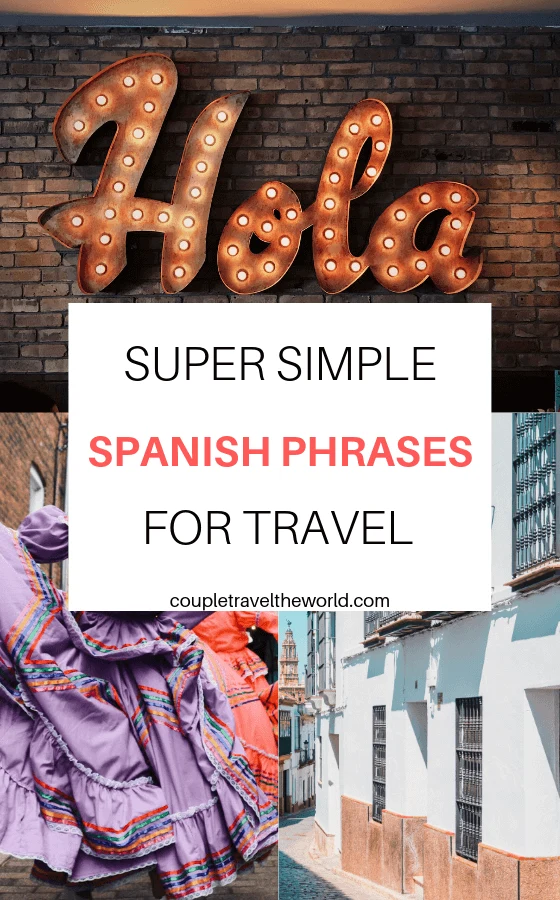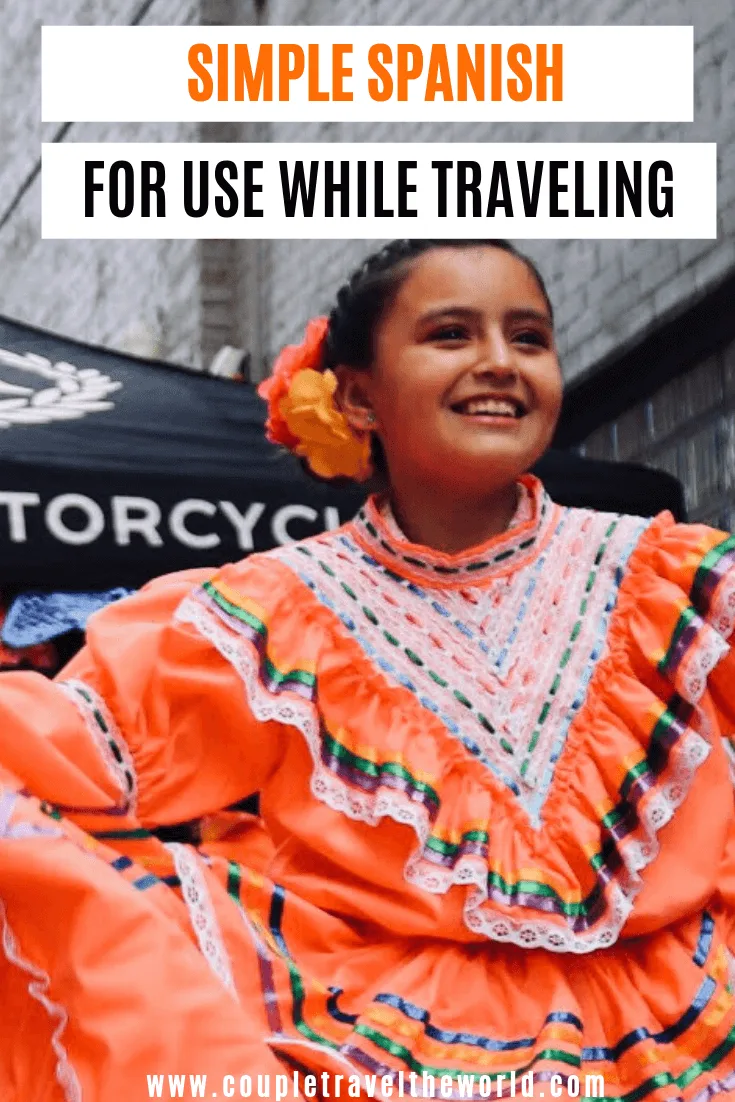Spanish is the fourth most commonly spoken language in the world, with over 500 million native speakers.
Spanish is the official language of at least 20 countries, particularly all over North, South and Central America including popular vacation destinations like Mexico, the Dominican Republic, Costa Rica and of course – Spain!
When visiting a Spanish speaking country you will find life a lot easier if you know a few words and simple Spanish phrases.
Let us show you how to say the most important common Spanish phrases like ‘Thank you in Spanish’, how to say please in Spanish, and how to say hello in Spanish.
Try incorporating one or two new phrases into each day and you’ll be impressed with your progress by the end of your vacation.
Thank you in Spanish
Gracias: Thanks! The simplest way of saying ‘thank you’ in Spanish is simply to say ‘Gracias’.
Pronounced GRAH-syahs. Note: In Spain “C” is pronounced “TH” – so it would be GRAH-thyahs.
Muchas Gracias: Thank you very much or thanks a lot! You can emphasise your thanks by adding muchas. Perfect for showing gratitude to someone for a lovely meal or giving you a big helping hand.
(MOO-chass GRAH-syahs)
Muchas: Along can be slang for ‘thanks’ which isn’t that common unless you are a hipster.
You’re Welcome in Spanish
De Nada: If you say gracias to someone you will often receive the response “de nada”. This translates to ‘it’s nothing’ and ‘you’re welcome’. I always think of it as ‘no worries’.
Now, if you hold the door for someone in a spanish-speaking country and you are thanked, you can complete the interaction by saying ‘de nada’ rather than giving an awkward nod or blank stare.
Pronounced DAY NAH-dah
Please in Spanish
Por Favor: It is simple to be curteous in Spanish, simply add ‘por favor’ (pronounced ‘pohr-fah-vour’) at the end of any request.
For example, one of my favourite ways to incorporate good manners into my daily routine is ‘dos cervezas mas por favor’ – two more beers please
Sorry in Spanish
There are lots of different ways of saying sorry in Spanish, but we’ll focus on the type most commonly used by tourists.
Perdón: Sorry! Or excuse me. As a rule of thumb, I basically use it in any situation I would use ‘pardon’ or ‘pardon me’ in English. So, use ‘Perdón’ if you accidentally bump into someone, or if you need to squeeze past someone in a supermarket, or if you didn’t hear someone correctly.
Lo Siento: If you’ve done something you wish to apologise for, ‘los siento’ (pronounced ‘loh SEA-ento’. More effective in resolving situations of conflict than perdon. If you bump into someone use ‘perdon’ but if you knock them over use ‘lo siento’.
Hello in Spanish
Hola: Hello or Hi in Spanish Depending on your tone. You would use ‘hola’ to greet any friends you are meeting.
However, things get a little more polite when you are speaking with people in service industries such as hotels, restaurants, or shops. You might want to say ‘good morning’ or ‘good afternoon’.
Good Morning in Spanish
Buenos Días: It’s easy to share your appreciate of the beautiful morning with your Spanish-speaking friends (amigos). Buenos Dias!
Pronounced ‘bweh-noss dee-yas’. Dias means day and Buenos means good. You’ll be using buenos a lot for these greetings so you now know 50% of the next few Spanish phrases.
Good Afternoon in Spanish
Buenos Tardes: After midday, use Buenos Tardes (pronounced ‘Bweh-noss Tarr-das’) when you are greeting people and it’s still daylight. You will find this greeting is used more often in Spanish speaking countries than a simple ‘Hola’, especially in hotels, shops et cetera.
Good evening / Good night in Spanish
Buenos Noches: After sunset you can use Buenos Noches (pronounced phonetically Bweh-noss Noh-Chez) to say good evening or good night. So whether you are greeting friends for dinner, or saying goodbye at the end of the night, you can use Buenos Noches. See? This Spanish thing isn’t that hard!
Goodbye in Spanish
There are lots of different ways to say goodbye in Spanish but we’ll focus on two of the most commonly used and simple phrases.
Adiós: Bye! Adios is the perfect way to say goodbye in Spanish for beginners because it can be used formally or informally. Like farewell or just goodbye. Pronounced ah-DEE-yos.
Hasta luego: The most common informal way to say goodbye in Spanish is ‘hasta luego’, pronounced (AHS-tah LWEH-goh). Hasta means ‘until’. Luego means ‘then’. Hasta luego means until then or see you later. You can also say ‘Hasta la vista’ which literally translates to ‘until this next sighting’ but people might look at you funny for not simply saying hasta luego – especially if you say it in broken Austrian-English accent (yes, that’s an Arnie clip).
My name is in Spanish
Me llamo ____ : Introducing yourself in Spanish is easy. You can say ‘my name is Mike’ by saying ‘Me ilamo Mike’ pronounced (MEH YAH-moh). Making a little extra effort by adding a few words will help set you aside from the other gringos.
How are you in Spanish
¿Cómo estás?: Impress your Spanish-speaking acquaintances by continuing the conversation with a natural question. How are you? Pronounced (Ko-Mo Eh-Stas). This is the most common way to say how are you in Spanish and can be used in any social situation. ‘Como’ means how in Spanish. Estas
Interesting side note: Notice in written Spanish questions are prefaced with the upside down question mark.
¿Qué pasa?: What’s up? Or How’s it going? A more informal way of asking how are you in Spanish, perfect for use with friends if you catch up frequently. Pronounced Ke-Pa-Sa.
Como Estas Reply
If someone asks you ¿Cómo estás? – ‘How are you?’ in Spanish, what do you say? Here’s a few terms depending on how you feel.
I am well in Spanish
Estoy bien: ‘Estoy’ means I am and ‘bien’ means good or well. So, this response also means I am good in Spanish. This is the most common ¿Cómo estás reply and if you’re wondering how to respond to como estas, this will be your go to phrase.
In more formal situations you can say ‘Estoy bien gracias’ which is Spanish for I am well thank you. It’s also acceptable just to say ‘bien’ which can be taken as fine or good.
Pronounced: Eh-Stoy Bee-en
I feel sick in Spanish
Me siento enfermo: To say I feel sick or I feel bad in Spanish say ‘Me siento enfermo’ (Mi Sea-ento en-firm-oh). Note, this is the masculine pronunciation. Females can say ‘Me siento enferma‘ (Mi Sea-ento en-firm-ah) but everyone will understand you either way.
Depending on your needs, you can also say el medico (doctor in Spanish) or hospital (hospital in Spanish) which is pronounced (ohs-pee-tahl).
Terrible in Spanish
¡Fatal!: translates to awful or terrible in Spanish. If things aren’t that bad but aren’t good either, you can use ‘Mal’ which translates to bad in Spanish.
I’m Feeling Tired in Spanish
Me siento cansado: means I feel tired in Spanish. Cansado is tired in Spanish. Females can say ‘cansada’. Dormir is sleep in Spanish. This can help you explain you need to go to bed, without knowing a lot of Spanish phrases.
Save this Simple Spanish Phrases, How to Say Thank you in Spanish to Pinterest



